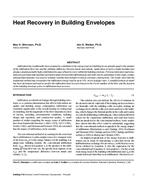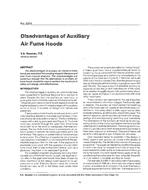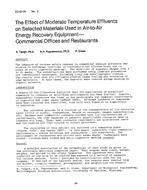Combined heat, air and moisture (HAM) simulation at the building envelope level and building simulation have been separate activities for many decades. In HAM-models, the indoor conditions are handled as known boundary values, while all building simulation tools predict inside temperatures and net energy demand without much consideration for relative humidity and air pressure gradients.
Things started to change with airflow modeling. That step not only allowed a better quantification of ventilation related energy consumption but also permitted a refinement of the humidity balances in the building. However, at least two facts remained poorly exploited: (1) many air flows enter and leave the building across the envelope causing a complex pattern of in- and exfiltration, indoor air washing, wind washing and air looping; (2), moisture buffering in indoor finishes, furniture and furnishings delays and dampens the inside water vapor pressure response compared to the outside. Both phenomena may have an impact on energy consumed for heating, cooling and air conditioning and influence the indoor environmental quality, while humidity transported by the adventitious air flows in and across the envelope could accelerate degradation. Analyzing both facts through whole building heat, air and moisture modeling and studying the impact on energy consumption, durability and indoor environmental quality were at the core of the annex 41 activity.
Units: SI
Citation: ASHRAE Transactions, vol. 115, pt. 2, Louisville 2009
Product Details
- Published:
- 2009
- Number of Pages:
- 8
- File Size:
- 1 file , 250 KB
- Product Code(s):
- D-LO-09-007


